$250.00 – $1,400.00
The Peru Strain — An Ancient Psychedelic Mushroom
The Peruvian strain was collected from somewhere within the large expansive pastures of the Peruvian Andes mountains. Here’s what makes this strain special.
Buy Peruvian Magic mushroom Online | Peruvian magic mushroom online Buy.
Buy Peruvian Magic mushroom Online. The high-altitude mist-covered pastures of Peru receive the perfect combination of sunshine, fertile land, and rainfall. This creates the perfect environment for the growth of fungi — covering the landscape in dense colonies of mushrooms with wide disk-shaped heads.
These mushrooms are quite potent — beginners, beware!
This strain colonizes aggressively, fruits quickly, and is a prolific spore producer. It seems to be extremely resistant to contamination and is able to produce up to six healthy flushes before succumbing to mold. The Peru strain is also very stable, with aborts rarely reported among amateur growers.
The mushrooms produced by the Peruvian strain are medium-sized and boast large, flat, disk-shaped caps that are light tan to dark-brown in color. These caps make noticeable color changes from one flush to the next — making Peru a visually interesting mushroom to grow.
It’s important to harvest these mushrooms at the right time. You mustn’t leave it too long before extracting the fruiting bodies from the substrate, or the caps will begin to split and deform.
Peru Strain Specs
| Potency | Above Average 💪 |
| Cultivation | Beginner |
| Species | Psilocybe cubensis |
| Substrate Recommendation | Pasteurized Manure |
| Cost | $$ |
| Sold By | shop |
The Ancient History of the Peruvian Mushrooms
Evidence suggests that magic mushrooms were an important part of life in pre-Hispanic Peru. Images and carvings of mushrooms have been found on ceramics, textiles, stone, and metal objects from many important ancient cultures.
These artifacts have been found in the north, south, and coastal regions of Peru, as well as in the highlands where the Peru strain was discovered. These objects are dated from 1200 to 200 BCE, showing that mushrooms have been a large part of Peruvian culture for an incredibly long time.
The most abundant and vivid representations of mushrooms were discovered in the art of the Moche culture. The images and artifacts illustrated the mushroom’s use by shamans (curanderos), people of high authority, and sacrificial victims.
![]() Effect of Peruvian Magic mushroom online | Buy Peruvian Magic mushroom Online
Effect of Peruvian Magic mushroom online | Buy Peruvian Magic mushroom Online
Researchers have determined some of the species from these artworks at least to a genus level. Calvatia, Psilocybe, Mochella, and Amanita muscaria have all been identified.
The Peru strain could well be a direct descendent of an ancient psychedelic mushroom that was used in ritualistic ceremonies over 3000 years ago.
The Peru Strain Potency & Psilocybin Content
The Peruvian strain is said to have above-average potency. Expect moderate to intense visual perceptive changes and a feeling of bodily vibrations. It’s great for stimulating philosophical thought and deep introspection.
The exact psilocybin content of the Peru strain is unknown. This isn’t a mainstream strain, and no published testing has been done to expose its exact chemical composition. However, a few keen mushroom lovers have reported their experiences with the mushroom.
Based on current trip reports (including our own), we estimate the total tryptamine content (psilocybin, psilocin, baeocystin, and various others) to fall somewhere between 1% and 2%.
This strain is still relatively new to the wider market — becoming available on Ralphsters Spores in late 2019 to early 2020. This could explain why there isn’t much in the way of quantitative data on the exact potency of the Peruvian strain (yet).
Where to Buy Peru Strain Spores
This is still a relatively new strain to come to market as Psilocybe cubensis mushrooms go.
How to Grow Peruvian Mushrooms
The Peru strain is relatively easy to grow. It colonizes quickly and aggressively, and it doesn’t take long for fruiting bodies to appear.
This strain is resistant to contamination, and with few aborts, it’s a pretty fool-proof strain that could be a good entry-level shroom for the beginner grower.
The Peru strain can be grown similarly to any other Psilocybe cubensis strain.
When deciding on the best substrate to use for Peru, you simply have to look at where it was discovered. This strain thrives in the manure of livestock; therefore, the best substrate to cultivate this mushroom is manure.
This strain will colonize any substrate and can be grown on rye grain, straw, and BRF cakes, but you will definitely have the most success using pasteurized manure. Although this strain thrives on dung in an unsterile outdoor environment, it’s still important to keep the growing environment sterile and controlled to see the best results.
There’s room for error, but the cleaner and more controlled the growing environment, the larger the yield and higher potency you’ll produce.
Using a heat mat isn’t essential if you want to grow the Peru strain, but it is recommended. Either way, you’ll see the best results if you can keep the growing environment at a relatively stable 24℃ (75℉). A few degrees on either side of this won’t hurt, and the strain will likely cope with larger fluctuations, but this is the temperature you’re aiming for.
If you keep the growing environment relatively stable, you’ll see bountiful harvests of good-sized Peruvian mushrooms from up to 6 flushes.
Be sure to keep an eye on the mushrooms and harvest them before the spores drop. When spores come into contact with mycelium, it releases hormones that tell the colony to stop fruiting and start colonizing. If you want multiple flushes from any mushroom strain, it’s important that you make sure new spores don’t meet the growing medium.
Similar Strains
The Peru strain is a mushroom with above-average potency and excellent yields. It’s also extremely easy to grow thanks to its low abort rate and high resistance to contamination. This makes it an excellent choice for beginner cultivators.
Peru isn’t the only mushroom strain that’s good for beginners. There are many other Psilocybe strains available that will produce several dense flushes of potent mushrooms.
Here are a few alternate strains to consider:
South American
The South American strain (SA) is notorious for its large mushroom size. These are the biggest Psilocybe cubensis mushrooms ever recorded. The large fruiting bodies produce good psilocybin levels and are considered to have above-average potency.
The first South American sample was discovered in the highland regions of Venezuela.
Argentina
The Argentina strain (ARG) is another Psilocybe cubensis strain from South America. This strain was discovered in the mountainous rainforests of Argentina. These mushrooms are smaller than average but with excellent contamination resistance; up to 10 flushes are possible before succumbing to mold.
Ecuador
The Ecuador strain (ECD) was first collected from the mountains of Ecuador over three decades ago. It’s a slow colonizer but is highly resistant to contamination and has a high tolerance — likely due to the natural growing conditions it encounters in the mountains.
This is a good beginner strain with above-average potency. Upon fruiting, the Ecuador strain produces medium to large-sized mushrooms that share a similar appearance with the Peru strain.
Koh Samui
The Koh Samui (KS) is one of the most popular strains among beginner growers. It’s extremely resistant to contamination and produces several flushes before succumbing to mold. Koh Samui is renowned for its short fat fruiting bodies that have above-average potency.
They’re more potent than the Peru strain and other easy-to-grow strains, but they’re a great beginner mushroom.
Allen Strain
The Allen Strain (AS) is a popular strain of Psilocybe cubensis that was discovered by John Allen during his travels throughout Southeast Asia back in the 90s. It’s famed for its extremely rapid colonization times — colonizing 10 to 20% faster than other cubensis strains.
Allen is easy to cultivate due to its resistance to contamination and forgiving nature. It has average potency and is an excellent choice for users that are new to mushrooms.
Thai
The Thai strain (THAI) is another strain collected by the ethnomycologist John Allen. This strain was discovered on the island of Koh Samui, and it shares similarities with the Koh Samui strain. Instead of short fat mushrooms that “KS” is famous for, the Thai strain produces taller bodies with round caps that flatten and convex during maturity.
Like other Southeast Asian strains, Thai is extremely easy to cultivate. It has average potency and produces good yields when grown correctly.
Golden Teacher
Golden Teachers (GT) are one of the most commonly cultivated psilocybin mushroom strains. They’re a fantastic option for beginners, thanks to their tolerance to unoptimized growing conditions. These mushrooms are extremely easy to grow, and several dense flushes produce good yields before the colony eventually succumbs to mold.
This fast-growing, resilient strain has a similar potency to Koh Samui and is just as easy to grow.
Strains vs. Species: What’s The Difference?
Strains are genetic variants of a species that have differences in physical and chemical characteristics. A single species can be made up of hundreds, if not thousands, of different strains.
“Strain” is part of a chain of terms given to biological organisms. The chain consists of 7 taxonomic groups: Domain, Kingdom, Phylum, Class, Order, Family, Genus, and Species (plus strain which is a low-level group under species). However, we can simplify this to Kingdom, Genus, Species, and strain for easier understanding.
The Taxonomic Chain in Simple Terms
Kingdom → phylum/division → order/class → family → genus → species → strain.
We’re going to zoom in, starting with the genus for the sake of simplicity. All the psychedelic mushrooms are listed in the Agaricomycetes class, which itself is listed under the Basidiomycota division.
Genus
This term describes a group of related biological organisms within a kingdom. A single “genus” can comprise one or more species.
You can see the genus of any species when looking at the binomial name (Latin name). The genus is always the first word; for example, Psilocybe is the genus of the species Psilocybe cubensis.
The genera of psilocybin-containing mushrooms include:
Species
Under the genus comes species. A species is a group of organisms that can reproduce naturally with one another to create fertile offspring.
In a binomial name, the second word defines the species. For example, in Psilocybe cubensis, cubensis is the species’ name.
There are well over a hundred individual species of psilocybin-containing mushrooms, but the most common are Psilocybe cubensis, Psilocybe semilanceata, Psilocybe aztecorum, and Panaeolus cyanescens.
Strain
Strain is a low-level rank in taxonomy that sits below species. “Strain” basically means genetic variant. Each strain of a species shows one or more differing characteristics.
The strain of a species is often written beside the binomial name. The strain can be written in any language (often English) and not solely Latin. For example, Psilocybe cubensis ‘Peru.’
Strains Are Present Throughout Several Species
Strains are present throughout several different species. They’re extremely common throughout species that we humans have intervened with to alter our genetic qualities for our benefit.
You can see this clearly when looking at dog breeds.
Dogs are part of the kingdom Animalia. The species’ binomial name is Canis lupus familiaris. Although this is one species, several different dog breeds differ significantly in appearance, characteristics, and qualities.
Within the Canis lupus familiaris species exists several breeds such as Collie, Malamute, Terrier, Alsatian, and Poodle. Although we call these breeds, they are essentially different strains of Canis lupus familiaris.
You’ll find several strains in the species we use for medical and recreational consumption as well. Cannabis is a good example. Cannabis sativa and Cannabis indica are both species that are made up of several strains, for example, Sour Diesel, Kush, Purple Haze, and Northern Lights. Kratom and kava are good examples of psychoactive plants with many unique strains.
| Quantity | Ounce, 1/4 Pound, 1/2 Pound, Pound |
|---|
Be the first to review “Buy Peruvian Magic mushroom Online” Cancel reply
Related products
Mushroom
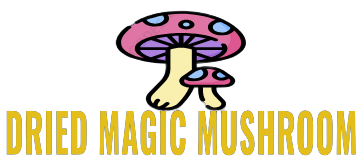
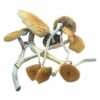
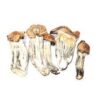


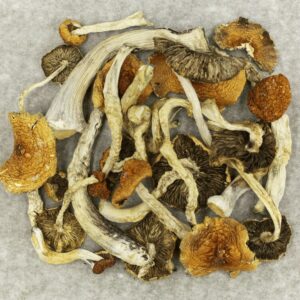
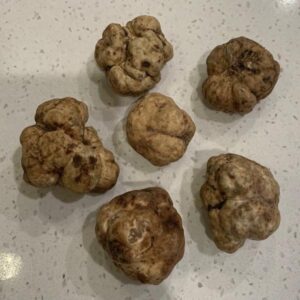
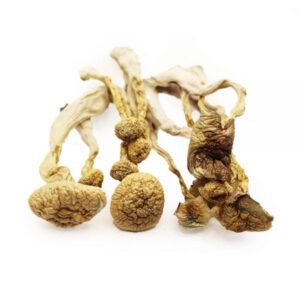
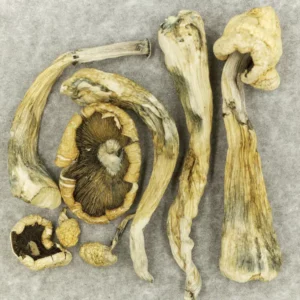
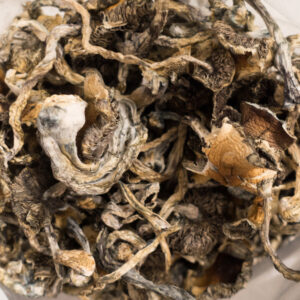
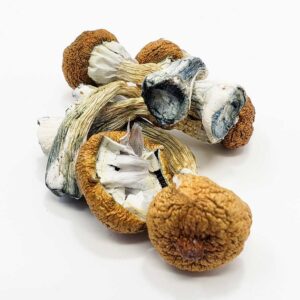
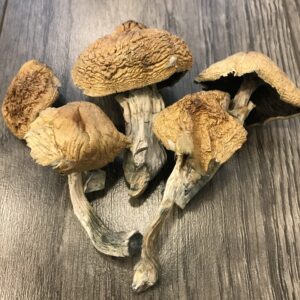

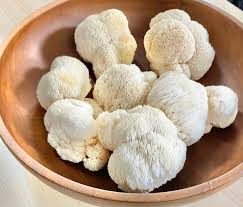
Reviews
There are no reviews yet.